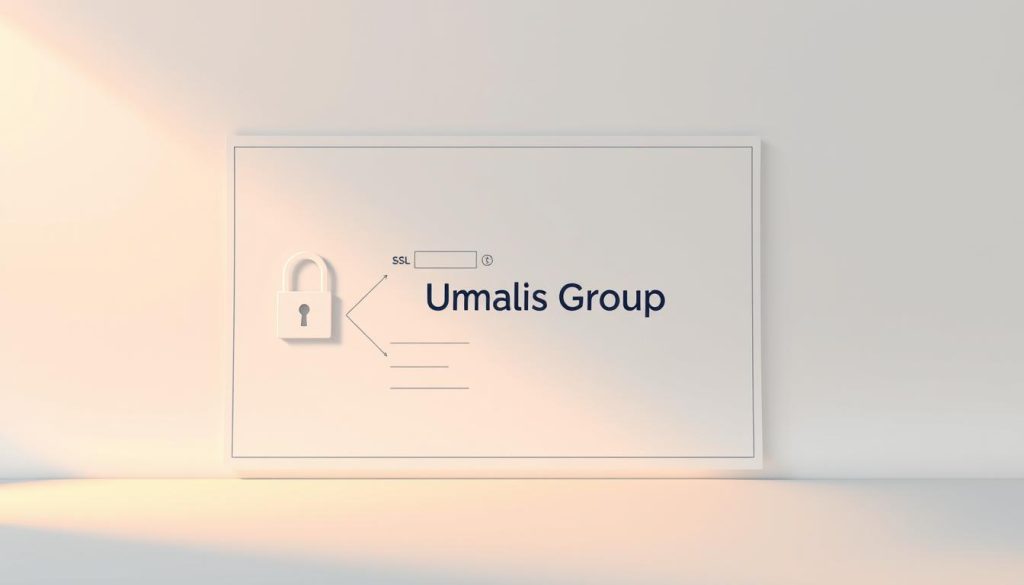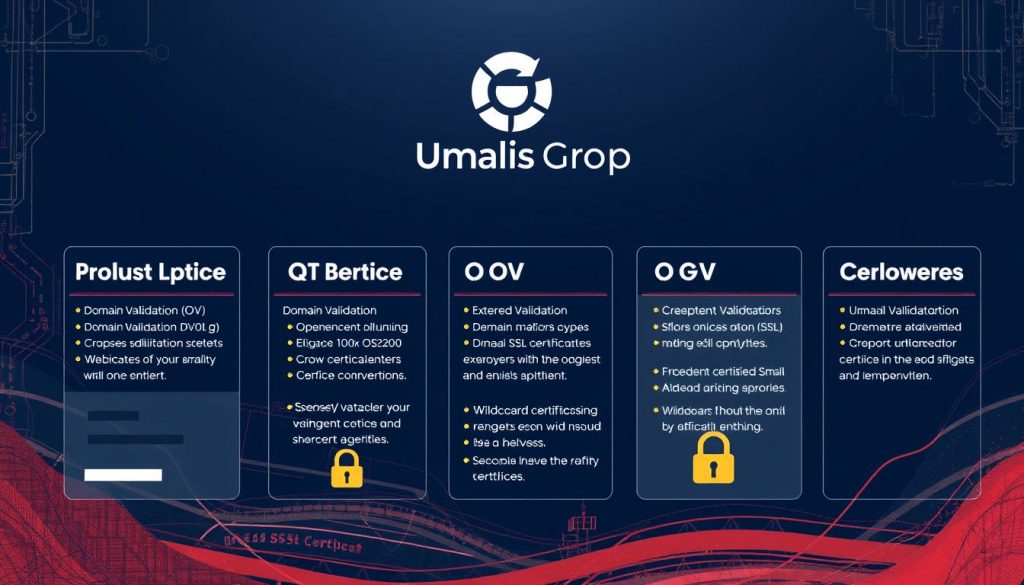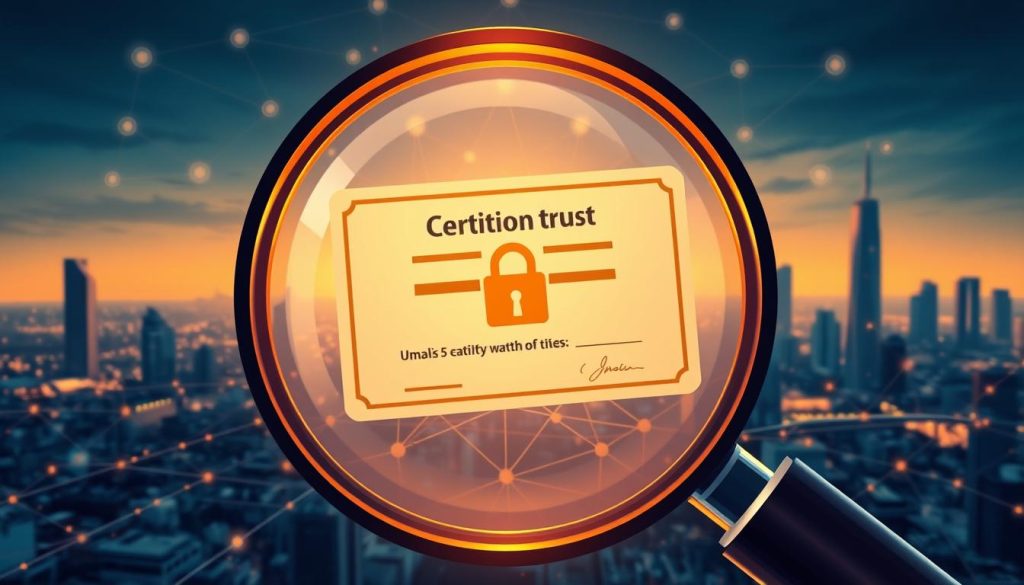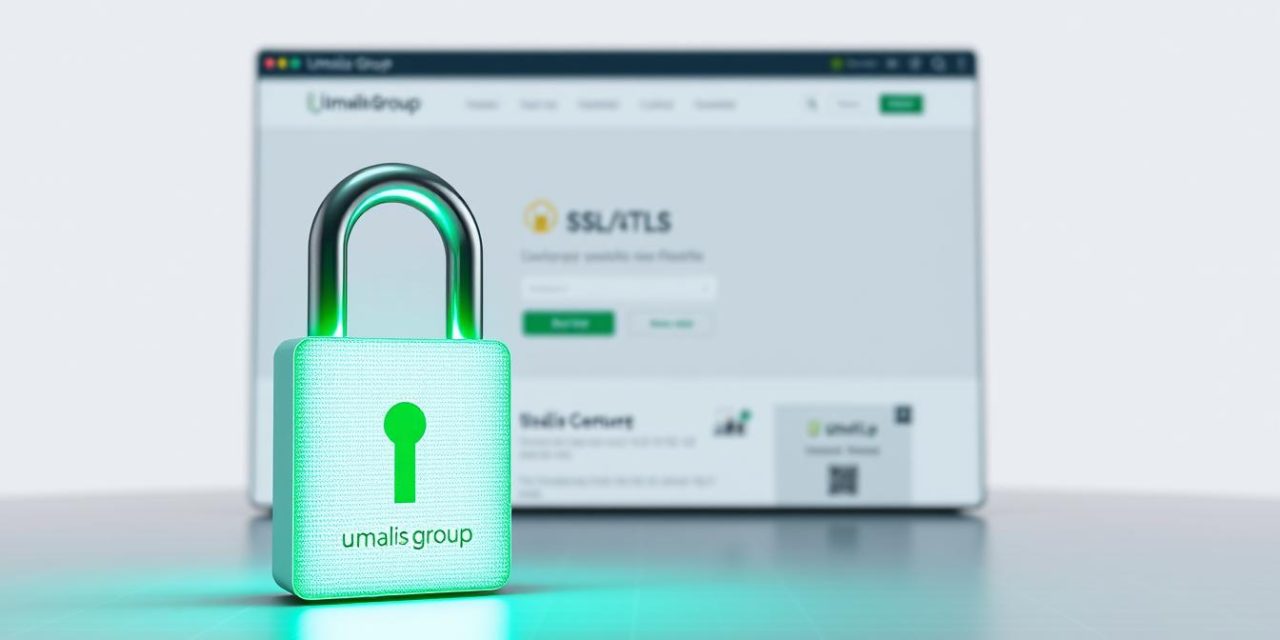Have you ever hesitated before entering your credit card details on a website? That split-second doubt isn’t just caution—it’s your instincts telling you to demand proof of safety. In today’s digital world, trust isn’t optional. It’s the currency that fuels every click, purchase, and interaction online.
For independent professionals, your website isn’t just a tool—it’s your virtual storefront. Visitors need to feel confident that their data, from emails to payment details, is shielded from prying eyes. This is where encryption becomes your silent partner. By creating a secure tunnel between browsers and your site, sensitive information stays private, and your reputation stays intact.
Modern browsers reward this protection with visible trust signals, like padlock icons. These symbols matter: 84% of consumers avoid sites lacking them. But security isn’t just about compliance. It’s about showing clients you value their privacy as much as your craft. Secure your site, and you’re not just locking out threats—you’re inviting trust.
Table of Contents
Key Takeaways
- Encrypted connections protect sensitive data and build visitor confidence.
- Trust indicators like padlock symbols directly impact customer decisions.
- Authentication proves your site’s legitimacy, deterring impersonators.
- Over 80% of users abandon sites without visible security measures.
- Security upgrades can boost conversion rates by up to 20%.
Introduction to Online Security and SSL
Imagine sending a postcard with your bank details for anyone to read—that’s how data traveled online decades ago. Early websites transmitted everything in plain text, leaving passwords and payment details exposed. Today’s digital safety standards evolved from those vulnerabilities, creating shields against invisible threats.
Understanding the Need for Encryption
Encryption acts like a secret code between you and your clients. It scrambles messages during transfer, turning sensitive details into unreadable patterns. Only verified devices with the right “key” can decode this information. This process stops hackers from stealing data mid-transaction.
Modern professionals can’t afford weak defenses. A single breach can destroy reputations built over years. Encryption isn’t just technical jargon—it’s your silent guardian against identity theft and fraud.
The Role of Secure Connections in Building Trust
Visitors instinctively check for trust signals before sharing information. Browsers display padlock icons when sites use encrypted connections, while warnings appear for unprotected pages. 79% of users report leaving immediately if these indicators seem unreliable.
Your website’s security directly impacts client decisions. By prioritizing protection, you show customers their privacy matters. This commitment builds lasting relationships and positions your brand as trustworthy in a crowded market.
What is an SSL Certificate and How Does It Work?
Every online interaction begins with a silent question: « Can I trust this site? » Behind the scenes, a digital guardian answers this query through layered security protocols. At its core, this technology verifies identities and scrambles sensitive data during transmission.
Think of an SSL certificate as both a verified ID card for your website and a sophisticated encryption tool. When a visitor’s browser connects to your server, they initiate a rapid verification dance called the « handshake. » This process confirms your site’s authenticity through cryptographic checks performed in milliseconds.
Your digital credential contains essential details like your domain name, organizational information, and expiration dates. Trusted third-party authorities validate these specifics before issuing the certificate. Once installed, it activates the padlock icon and « https » prefix that users recognize as safety signals.
The magic happens through two types of keys: public ones that encrypt data, and private ones that decode it. These work together to create secure tunnels for information exchange. 92% of businesses report increased customer confidence after implementing this protection layer.
Best of all, this security operates invisibly. Visitors enjoy smooth browsing while their login details, messages, and payment information stay shielded. For professionals, it means demonstrating technical competence without overwhelming clients with jargon.
Understanding SSL certificate

Behind every secure website lies a small but mighty guardian of trust. These digital credentials, often smaller than a smartphone photo, pack critical security features into a file your server hosts. They serve dual roles: verifying your domain’s identity like a digital passport and enabling robust encryption for data protection.
Your credential contains verified details about your organization and domain ownership, stamped with approval from trusted authorities. Think of it as containing three core elements: authenticated business information, expiration dates for renewal reminders, and cryptographic keys that lock down sensitive exchanges. The issuing authority’s digital signature acts as a seal of authenticity browsers recognize instantly.
These protections aren’t permanent—most credentials expire within 12-24 months. Regular renewal ensures continuous security without gaps. When installed correctly, they activate the familiar padlock icon and « https » prefix visitors look for.
Here’s how encryption works: your public key scrambles data sent to the server, while a private key (never shared) deciphers it. This system allows secure logins and payments across multiple subdomains—blog.yoursite.com and shop.yoursite.com can share protection under one credential.
Understanding these components helps you choose the right security level for your needs. Whether you’re validating a personal blog or securing client portals, the right setup builds credibility while shielding sensitive interactions.
The Evolution from SSL to TLS
Digital security transformed in 1995 when Netscape launched Secure Sockets Layer (SSL). This protocol became the foundation for encrypted web communications, shielding sensitive data as e-commerce exploded. But like any technology, early versions had flaws that demanded innovation.
History of Secure Sockets Layer
SSL 1.0 never reached the public due to critical vulnerabilities. Version 2.0 arrived in 1995 but faced attacks exposing its weaknesses. SSL 3.0 (1996) introduced stronger encryption, yet security researchers later uncovered risks like the POODLE attack. These challenges sparked the need for a more robust solution.
Transition to Transport Layer Security
In 1999, the Internet Engineering Task Force rebranded SSL 3.1 as Transport Layer Security (TLS) 1.0. This wasn’t just a name change—it overhauled encryption methods and authentication processes. Each TLS update since has closed vulnerabilities while improving speed:
| Protocol | Release Year | Key Improvements |
|---|---|---|
| TLS 1.0 | 1999 | Fixed SSL 3.0 vulnerabilities |
| TLS 1.2 | 2008 | Stronger cipher suites |
| TLS 1.3 | 2018 | Simplified handshake, quantum-resistant |
« The shift from SSL to TLS wasn’t just a name change—it represented a fundamental redesign of security architecture, » explains cybersecurity expert Mark Chen.
Though Transport Layer Security is the modern standard, the term « SSL » persists in marketing and casual conversation. When you acquire an SSL certificate today, you’re actually getting TLS-enabled protection. This evolution ensures your site benefits from 25+ years of cryptographic advancements.
Types of SSL Certificates: DV, OV, EV, Wildcard, and More

Choosing the right security solution feels like picking the perfect lock for your front door—too basic invites risk, too complex creates barriers. Five main credential types serve different needs while maintaining encrypted connections. Let’s explore how each option balances trust signals with practical requirements.
Domain Validated (DV) Certificates
DV options provide essential protection at entry-level pricing ($0-$99/year). Automated checks confirm you control the domain—typically through email verification. Ideal for blogs or brochure sites, they activate the padlock icon without extensive business verification. 47% of small websites use this cost-effective solution.
Organization and Extended Validation Certificates
OV credentials ($100-$999/year) require nine validation steps, including business registration checks. They’re perfect for service providers handling client data but not payments. EV options ($1,000+/year) undergo sixteen verification stages and display your company name in green browser text. Financial institutions and e-commerce sites often choose this premium tier.
| Type | Validation Level | Cost Range | Best For |
|---|---|---|---|
| DV | Domain ownership | $0-$99 | Blogs, personal sites |
| OV | Business registration | $100-$999 | Service providers |
| EV | Legal entity verification | $1,000+ | E-commerce, banks |
| Wildcard | Domain + subdomains | $150-$800 | Complex sites |
Wildcard options secure unlimited subdomains under one credential—ideal for SaaS platforms. Multi-Domain certificates protect up to 250 domains, streamlining management for agencies. 85% of enterprises combine multiple types for layered security.
Your choice depends on three factors: data sensitivity, customer expectations, and operational complexity. Higher validation levels build credibility but require more documentation. Start with what your clients need to see—then scale as your practice grows.
The Role of Certificate Authorities in Establishing Trust

What if every online handshake required a verified witness? Certificate authorities (CAs) serve this exact purpose—acting as impartial validators in a world of digital uncertainty. Only about 100 globally recognized CAs exist, each undergoing annual audits to maintain their status as internet guardians.
How CAs Verify and Sign Certificates
Before issuing credentials, these authorities conduct multi-step checks. For organization validation, they confirm business registration, physical address, and domain ownership. One CA reported rejecting 37% of applications due to incomplete documentation last year.
The verification process varies by certificate type. Extended validation requires legal checks akin to opening a business bank account. Once satisfied, the CA stamps its digital signature—a cryptographic seal of approval. This creates a trust chain browsers automatically recognize through pre-installed root lists.
« CAs don’t just validate domains—they vouch for your professional legitimacy, » notes cybersecurity analyst Laura Simmons. « Their reputation becomes part of your site’s security story. »
Your choice of authority impacts client perceptions. Established providers like DigiCert or Sectigo carry instant recognition, while newer entrants may require explanation. Regular revalidation ensures standards stay current with evolving threats.
This system lets you leverage decades of security infrastructure. Visitors see that independent experts have confirmed your site’s authenticity—no technical jargon needed. That’s how trust scales in the digital age.
SSL Certificate: How It Creates a Secure Connection
Your website’s security depends on invisible conversations happening in milliseconds. When visitors arrive, their browsers initiate a complex verification dance with your server. This automated process—lasting less than half a second—creates an encrypted tunnel for all subsequent interactions.
The SSL Handshake Process Explained
Imagine two strangers establishing trust through a secret handshake. Here’s how it works digitally:
- A browser connects to your site and requests identification
- Your server sends its public key and verified credentials
- The browser validates this information against trusted sources
- A unique session key gets created and encrypted using your public key
- Your server decrypts this key using its private counterpart
This entire exchange happens before any data transfers. 97% of users never realize it’s occurring—they simply see the padlock icon confirming success.
Encryption: Public, Private, and Session Keys
Three cryptographic elements work together like a security relay race:
- Public keys act as shared lockboxes anyone can use to encrypt data
- Private keys remain securely stored on your server as master decoders
- Session keys become temporary passwords for each visitor’s connection
This layered approach balances protection with performance. While initial verification uses stronger asymmetric encryption, ongoing communication switches to faster symmetric methods. Each session key self-destructs when the browser closes, leaving no reusable access points for attackers.
You don’t need to manage these technical details—they operate automatically once proper security measures are in place. What visitors experience is seamless protection that keeps their data confidential while maintaining your site’s speed and reliability.
How to Obtain and Install Your SSL Certificate
Securing your online presence begins with three critical steps: requesting validation, configuring your server, and activating encrypted connections. While the process may seem technical, modern tools simplify setup for professionals at every skill level.
Creating Your Verification Request
Start by generating a Certificate Signing Request (CSR) through your hosting platform or tools like OpenSSL. This file contains your public key and verified business details. Double-check domain spelling—errors here delay validation. Most providers guide you through this step with auto-fill forms.
Server Setup Made Simple
After receiving your approved credential, upload it through your hosting dashboard. Configuration varies slightly between Apache, Nginx, and other servers, but clear documentation exists for each. Enable automatic redirects to ensure all traffic uses the encrypted protocol. Test your setup using free online validators to confirm proper installation.
Common pitfalls include expired credentials or mismatched domain names. Set calendar reminders for renewal dates, and always keep backup copies of your keys. Pro tip: Many hosting providers now offer one-click installation, streamlining the process for time-strapped professionals.
With your security layer active, visitors immediately see trust indicators like the padlock icon. This visible commitment to protection strengthens client relationships while safeguarding sensitive exchanges. Your digital workspace now operates at professional security standards—silently building confidence with every interaction.
FAQ
How does encryption protect my website visitors?
Encryption scrambles data exchanged between browsers and servers, ensuring sensitive details like login credentials or payment information remain unreadable to unauthorized parties. Modern protocols like Transport Layer Security (TLS) use advanced algorithms to create a secure tunnel for information exchange.
What’s the difference between DV and EV validation levels?
Domain Validated (DV) confirms ownership of a domain, while Extended Validation (EV) requires rigorous checks of your business’s legal identity. EV certificates display your company name prominently in the address bar, boosting credibility with customers.
Why does my browser show a padlock icon for some sites?
The padlock indicates a secure connection via HTTPS, meaning the website uses TLS/SSL protocols. This icon assures users their data is encrypted and the server’s identity has been verified by a trusted Certificate Authority (CA).
How do Certificate Authorities prevent fraudulent websites?
CAs validate domain ownership and organizational details before issuing digital certificates. For higher assurance levels like OV or EV, they verify official business records, ensuring only legitimate entities receive trusted credentials.
What happens during the TLS handshake process?
When a browser connects to a server, they agree on encryption standards and exchange public keys. The server proves its identity with a CA-signed certificate, then both parties generate unique session keys to encrypt all subsequent data transfers.
Can one certificate secure multiple subdomains?
Yes—wildcard certificates protect a primary domain and unlimited subdomains (e.g., blog.yoursite.com, shop.yoursite.com). This simplifies management while maintaining strong encryption across all sections of your web presence.





